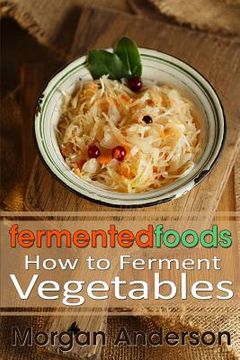Share
Fermented Foods: How to Ferment Vegetables (in English)
Morgan Anderson
(Author)
·
Createspace Independent Publishing Platform
· Paperback
Fermented Foods: How to Ferment Vegetables (in English) - Anderson, Morgan
$ 7.18
$ 8.98
You save: $ 1.80
Choose the list to add your product or create one New List
✓ Product added successfully to the Wishlist.
Go to My WishlistsIt will be shipped from our warehouse between
Thursday, June 06 and
Friday, June 07.
You will receive it anywhere in United States between 1 and 3 business days after shipment.
Synopsis "Fermented Foods: How to Ferment Vegetables (in English)"
Do you want to learn to ferment vegetables? The fermentation process takes vegetables and turns them into probiotic powerhouses packed full of healthy microorganisms and enzymes. If you're looking to add probiotic bacteria to your diet, learning to ferment vegetables is a cheap and easy way to do it. The following topics are covered in the beginning chapters of the book: What lacto-fermentation is and what happens during the fermentation process.The four items you need to get started.The health benefits of fermented vegetables.Vegetable fermenting basics.A quick introduction to fermenting vessels, including the pros and cons of some of the more popular container types.Weighting systems and why they're important.The best types of salt and water to use.Starter cultures and why they aren't always necessary.How to tell when vegetables are done fermenting. This handy guide contains more than 35 recipes, including step-by-step directions detailing how to make the following fermented vegetables: Asparagus.Fermented shredded beets.Beet kvass.Beet kanji.Brussels sprouts.Cultured cucumber salad.Curtido.Curried cauliflower.Dilly carrots.Dilly beans.Probiotic ketchup.Kimchi.Kohlrabi pickles.5 different types of sauerkraut.Fermented cherry tomatoes and green tomatoes.and more. A number of common problems encountered during fermenting are covered at the end of the book, including mold, slime, cloudy substances at the top of the brine and vegetables that smell rotten, taste funny or go soft. Buy this book today and learn how to make fermented vegetables
- 0% (0)
- 0% (0)
- 0% (0)
- 0% (0)
- 0% (0)
All books in our catalog are Original.
The book is written in English.
The binding of this edition is Paperback.
✓ Producto agregado correctamente al carro, Ir a Pagar.

